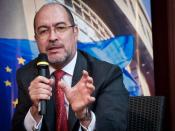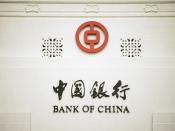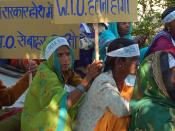If someone had told any news editor that their front page story for 29th November 1999 would be about an obscure trade conference in a little known American city, the reaction might well have been complete surprise. Seattle was the meeting of about 5,000 delegates from 150 countries for a new round of global trade talks. Like the Uruguay Round begun in 1986 and the Tokyo Round started in 1973, the Seattle Round looked to slash tariffs, abolish subsidies and open up investment for companies seeking to get into global markets. The effect the protestors had on the WTO meeting was unprecedented, they not only stopped the talks for a day but helped to raise issues that gave smaller and poorer countries the voice to speak up and helped lead to the collapse of the talks. When Seattle broke up on Friday 3rd December 1999 the delegates from 135 nations said they could not agree on an agenda for future trade talks.
The talks ended partly due to the anger of the delegates from the developing world who believed and have repeatedly stated that they were not benefiting from globalisation. The USA and Europe offered preferential trade treatment to those nations but this offer was not enough to make headway and soothe delegates from Latin America, Asia and Africa.
Small and poor countries have felt slighted in the World Trade Organisation and felt that the bigger more powerful countries within the WTO push them around. These countries were at a disadvantage to wealthy countries with huge delegations were able to send people to a variety of meetings, for example Japan had 88 negotiators in Seattle, the USA had 85 and the Europeans 76, by contrast Belize, Faso and the Congo each had five and the Dominican Republic could only afford...


